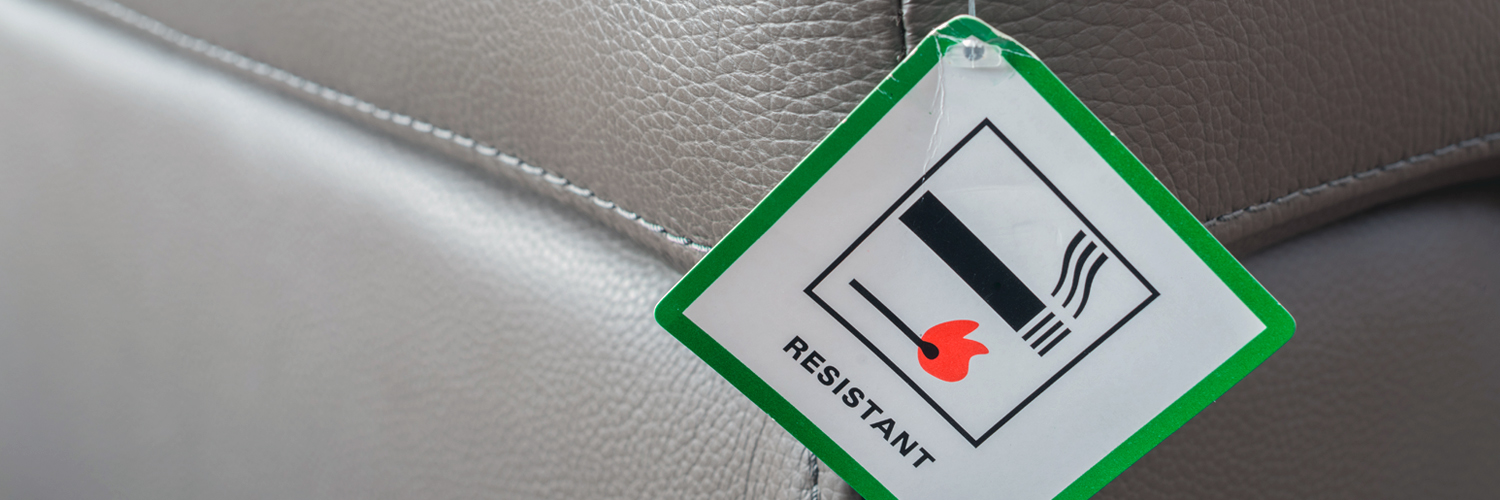Chlorinated Tris Flame Retardants – Regulation by State
A number of states are implementing laws impacting the use of specific chlorinated tris compounds, which are flame retardant chemicals added to products such as foam. TDCPP is one that tops the list for most states. TDCPP was banned from use in children’s sleepwear in the 1970s, but is still used in polyurethane foam.
The states listed below have passed laws regulating not only TDCPP, but other flame retardants. The bans apply to children’s products and furniture. In addition to these states, Massachusetts and Washington have pending regulations that will affect the use of specific chlorinated tris flame retardants.
| State | Regulated Chlorinated Tris | Products Effected | Effective Date |
|---|---|---|---|
| California | TCEP, TDCPP, TDBPP | California Proposition 65 list | varies |
| Connecticut | TCEP, TDCPP, TCPP | Products intended for children 3 years of age & younger | October 1, 2014 |
| Maryland | TCEP | Child care products intended for children under 3 | October 1, 2013 |
| New York | TCEP | Products intended for use by children under 3 | December 1, 2013 |
| Vermont | TCEP, TDCPP | Residential upholstered furniture and juvenile products | January 1, 2014 |
- Tris (2-chloroethyl) phosphate (TCEP), CAS # 115-96-8
- Tris (2,3-dibromopropyl) phosphate (TDBPP), CAS # 126-72-7
- Tris (1,3-dichloro-2-propyl) phosphate (TDCPP), CAS # 13674-87-8
- Tris(2-chloro-1-methylethyl)phosphate (TCPP), CAS # 13674-84-5
ATS’ current capability for flame retardants includes approximately 30 different flame retardants. The limit of detection for PBDEs is 10 parts per million (ppm) and for tris flame retardants is 1 ppm.
States Stomping Down on Bisphenol A (BPA)
States are continuing to enact legislation regulating BPA. Below is a complete list of the states with effective legislation. In addition to this list, the following states have introduced bills banning the use of BPA (but not quite yet effective): Hawaii, Kentucky, Minnesota, Missouri, New Jersey, Pennsylvania, South Dakota, and Texas.
| State | Regulated Chlorinated Tris | Products Effected |
|---|---|---|
| California | Bottles or cups intended for children 3 years of age or younger. Limit is 0.1 parts per billion (ppb) | July 1, 2013 |
| Connecticut | Reusable food or beverage containers, baby food or infant formula Thermal receipt paper or cash register receipt paper | October 1, 2011 October 1, 2013 |
| Delaware | Bottles or cups intended for children under 4 years of age | July 2, 2012 |
| Maine | Priority chemical – reporting requirements | |
| Maryland | Children’s bottles or cups Infant formula – limit is 0.5 ppb | January 1, 2012 July 1, 2014 |
| Massachusetts | Children’s reusable food/beverage containers | Manufactured after January 7, 2011 Sold after July 1, 2011 |
| Minnesota | Bottle or cup intended for children under 3 years of age | Manufactured after January 1, 2010 Sold after January 1, 2011 |
| New York | Pacifiers, baby bottles, sippy cups, and other unfilled beverage containers intended for use by children under 3. Also applies to products labeled as “BPA-free” | December 1, 2010 |
| Vermont | Baby food & infant formula stored in containers with BPA Reusable food or beverage containers such as baby bottles, spill-proof cups, sports bottles, and thermoses | July 1, 2012 |
| Washington | Empty bottles, cups, or other food or beverage containers Empty sports bottles of 64 ounces or less | July 1, 2011 July 1, 2012 |
| Wisconsin | Empty baby bottles and spill-proof cups intended for children 3 years of age or younger | June 15, 2010 |
| District of Columbia | Bottles, cups, or containers intended to be filled with food or liquids | July 1, 2011 |
ATS’ current BPA detection limit is 100 parts per trillion (ppt). Standard turnaround time for this analysis is 3-5 business days.
Are you compliant with the NEW EU toy testing requirement?
The new EN 71 Part 3 (chemical requirements) became effective July 20, 2013. The list of required heavy metals and substances for testing went from eight to nineteen. The limit for each heavy metal/substance is specific to the toy material. Therefore, the new standard now has three material categories. Products are classified into a category based on the material and corresponding metal limits are associated with the category.
The list of regulated heavy metals includes: aluminum, antimony, arsenic, barium, boron, cadmium, chromium III, chromium VI, cobalt, copper, lead, manganese, mercury, nickel, selenium, strontium, tin, organic tin, and zinc. In order to comply with the European Union (EU) Toy Safety Directive (2009/48/EC), toy manufacturers/importers must ensure compliance with the new EN 71 Part 3:2013.
